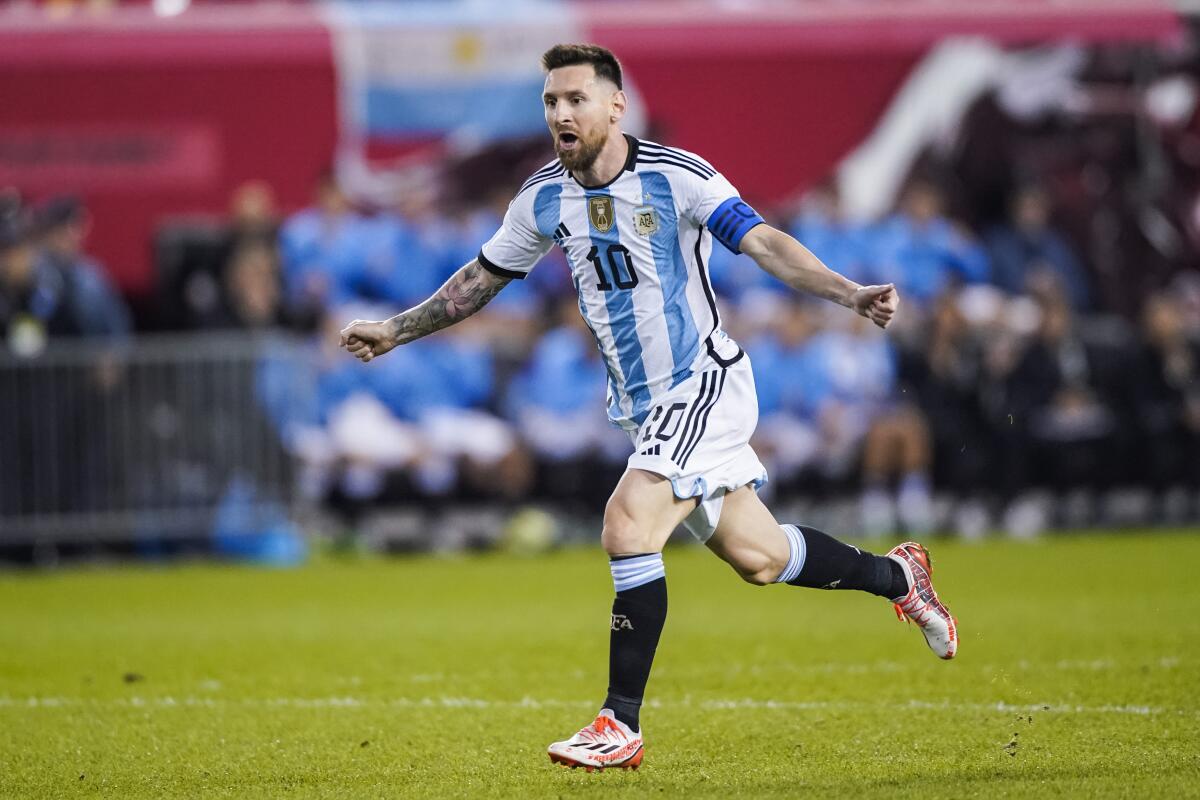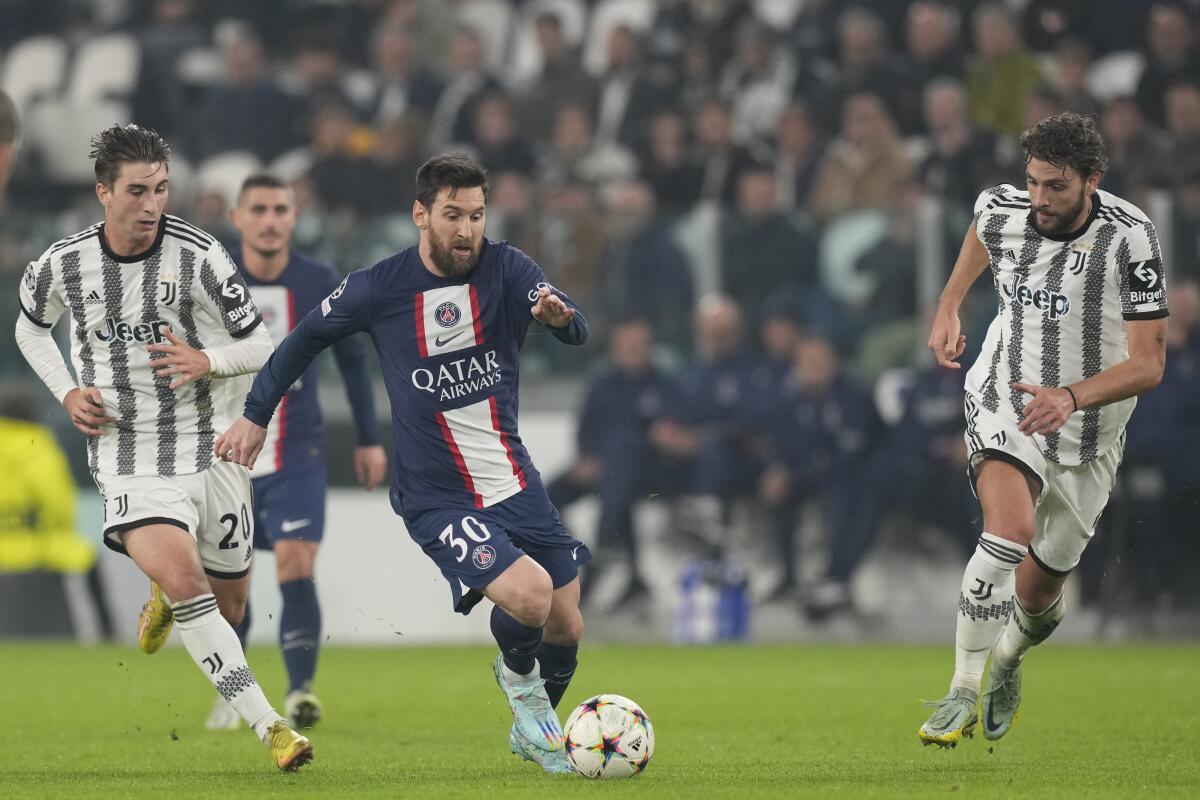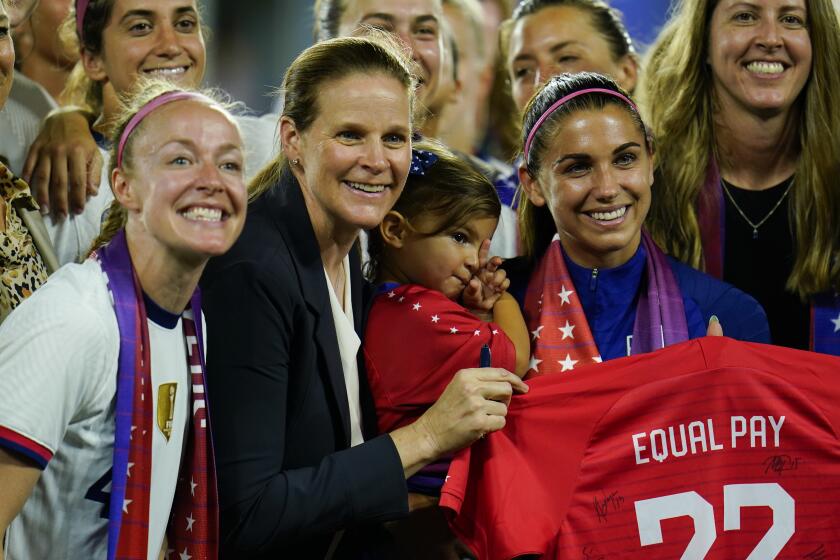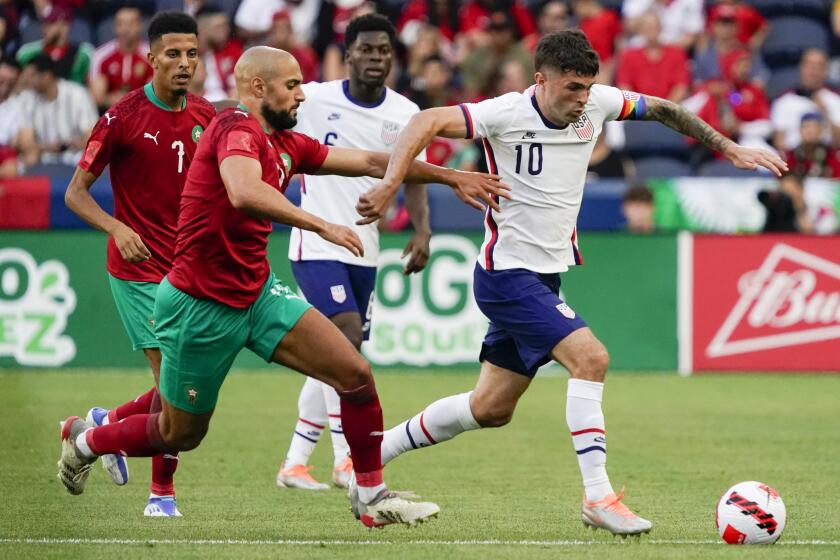Column: Lionel Messi might not be enough for MLS to reach the mainstream

- Share via
Don Garber spoke carefully, as commissioners of sports leagues often do.
“It’s not something that will define their success,” Garber said.
Garber paused for a beat.
“In my opinion, that’s the quote,” he said. “It will not define their success.”
The longtime commissioner of Major League Soccer, Garber was addressing reports on the possibility Inter Miami could sign Lionel Messi after his contract with Paris St. Germain expires next summer.
Garber shared the opinion that Messi was the greatest player in the sport’s history. He said any league in the world would welcome the seven-time world player of the year.
However, Garber added, “We don’t need any individual player to drive where MLS is going to go.”
What’s more critical to the long-term success of Inter Miami, Garber said, is that it builds a first-class stadium.
Speaking about his league’s future in a downtown Los Angeles hotel two days before the MLS Cup final between LAFC and the Philadelphia Union, Garber sounded similar to how he did two decades ago.
Garber preached the importance of solidifying infrastructure. He called for patience.
The qualities have served Garber well. When he became commissioner in 2001, MLS faced a real threat of extinction. Contraction reduced the number of teams to 10.
The U.S. women’s team will play a pair of friendlies in New Zealand ahead of the 2023 World Cup, which will be hosted by Australia and New Zealand.
Under his watch, the league gradually expanded and built its own stadiums. Next season, MLS will have 29 teams, of which 26 will play in facilities that were either built or renovated for soccer. The level of play has improved to where proven international talents such as Lorenzo Insigne to high-end foreign prospects such as Riqui Puig were willing to make the league their home.
MLS has long ceased to be in any danger of folding. The question now is what does the league have to do to become a regular presence in the more people’s lives?
As much as the league has grown, MLS continues to be a league of the future, what it could be remains more interesting than what it is, whom it could sign continues to be more exciting than whom it has.
Recent days were an example.
MLS made news around the world, but not because of LAFC’s dynamic front line of Carlos Vela, Cristian Arango and Denis Bouanga or the Union’s suffocating high-press defense.
The reasons for the sudden interest were reports about a potential move to David Beckham-owned Inter Miami by Messi, who at 35 arguably remains the best player in the world.

Messi owns property in Miami and has previously spoken about his wish to play in the United States. The Athletic reported that Messi’s father has taken “numerous” meetings with Inter Miami co-owners Jorge and Jose Mas, with conversations advancing to where the team is confident of signing him.
Though Beckham proved to be an indispensable vehicle to convince various cities to invest in soccer-specific stadiums, he couldn’t elevate the Galaxy to mainstream status.
Zlatan Ibrahimovic couldn’t either.
So Garber’s tempering of expectations for what Messi could mean for his league are understandable.
But if Messi wouldn’t be a game-changer, what will be?
Garber spoke of how MLS could use the 2026 World Cup that will be co-hosted by the United States as a vehicle to drive the league’s popularity but didn’t specify how.
The U.S. men’s national team will play matches at Banc of California Stadium and Dignity Health Sports Park after the World Cup in Qatar.
Most of the U.S.’s top players are now in Europe. The league estimates around 40 of its players will be at the World Cup in Qatar later this month, but most of them are peripheral figures.
Garber said he didn’t have any short-term plans to change the league’s roster construction rules, which have resulted in top-heavy rosters and lesser-spending teams remaining competitive.
He said of the league’s broadcast-rights deal with Apple TV that has been the subject of widespread skepticism, “It’s a long-term play.”
He acknowledged the reality that LAFC isn’t followed week in and week out by the average Los Angeles sports fan such as, say, the Lakers are, but said, “That’s probably going to take time versus a specific strategy about what players you sign. I think things have changed a bit more in many markets in MLS, where teams have come in over the last five to 10 years and have become an important part of the landscape in their communities, in Cincinnati, in Austin, in Nashville, in Minnesota, pick the expansion market, in Portland, in Seattle, where they aren’t coming into a very mature market with 11 teams, like in L.A. or New York.”
He sounded as if he planned to stay the course.
That won’t sit well with everyone, including some of the league’s stakeholders who view an unprecedented opportunity in front of them. MLS’ fiscally-conservative approach spared it the damage sustained by many other soccer leagues during the pandemic; why not make bold changes now to take advantage of the situation?
Garber has heard similarly impatient voices before, of course, and in the end, his approach was proven right. He’s not about to change.











